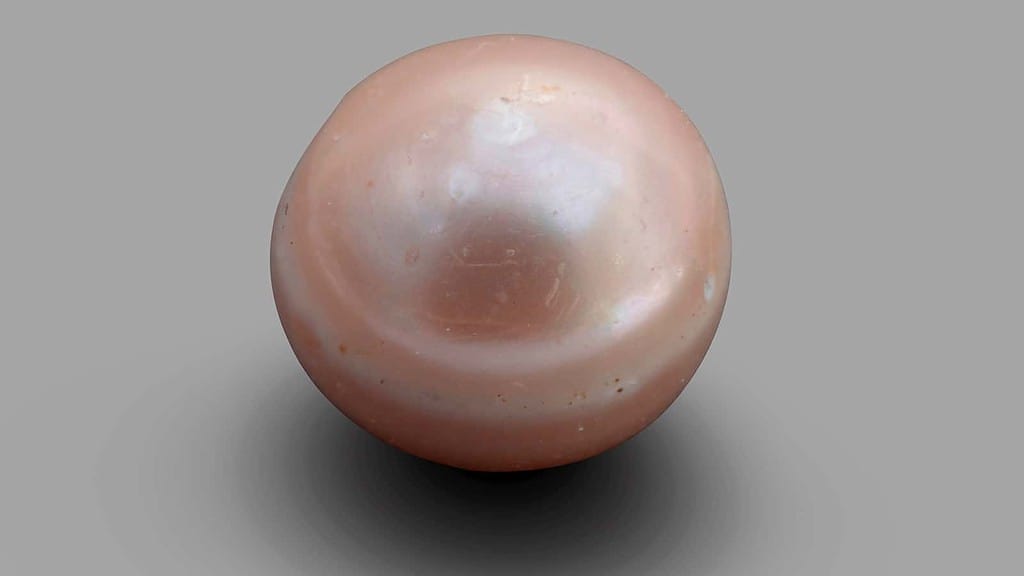June Birthstones: Pearl, Moonstone, and Alexandrite – All you need to know about these special gems
The post June Birthstones: Pearl, Moonstone, and Alexandrite – All you need to know about these special gems appeared first on The Yoga Nomads.

June babies are lucky enough to have not one but three special birthstones to choose from! We present to you the Pearl, Alexandrite, and Moonstone, the three June birthstones. Each is unique in its own way, and each has its own symbolic meaning.
Pearl birthstone has long been the most popular and most famous gem for those with June birthdays. On the other hand, the Moonstone, believed to be formed from the moon’s rays, has been part of the June birthstone selection for almost a millennia.
Lastly, the Alexandrite is the newbie among June birthstones due to the fact it was first discovered less than 200 years ago.
Why are there Three June Birthstones?
It is not unusual for months to have more than one birthstone assigned to them. In fact, June is not the only one offering the choice of three beautiful stones to choose from. There are also August and December, which also offer choices from three gorgeous birthstones.
The idea of birthstones dates back to biblical times when the concept was first mentioned in the Book of Exodus. It is a truly wonderful way to celebrate and cherish Earth’s most stunning natural treasures. Moreover, people love and adore the fact that their birthstones create a unique and special bond with them.
If you choose to wear the stone of your birth month, it is said that the special birthstone will give you protection, good fortune, and abundance. However, whether or not June is your birth month, you can still enjoy and benefit from these three magnificent gems.
The Official List of Birthstones
The list of traditional or historical birthstones originates in Poland between the 16th and 18th centuries. Nonetheless, many birthstone combinations continued to be used by different cultures, which had different stones assigned to the months. So in 1912, the American National Jewelers’ Association created the so-called modern list of birthstones.
When it comes to June, Pearl and Moonstone were already on the original list. However, Alexandrite was added in 1952, nearly a century since it was discovered. Since then, those born in June have had three birthstones.

Pearl – The traditional June birthstone
Pearls fascinated people and have been treasured and loved since ancient times. What makes them even more remarkable is the fact that they are only gemstones made by living creatures, developed in nature entirely on their own. Symbol of elegance and grace, they are a timeless wardrobe staple and every woman’s beloved jewelry.
Since forever, pearls have been associated with purity, humility, and innocence. Therefore, the beautiful June birthstone meaning is simply described as “sweet simplicity,” which is also why they become a traditional wedding present.
In addition, giving pearls as a gift for the 30th wedding anniversary is a long-standing tradition. In the past, the anniversary was also known as the Pearl Anniversary. It was because historically, wives celebrating their 30th anniversary were presented with pearl jewelry. Nowadays, pearls are also given to commemorate the 3rd wedding anniversary as well.
History and Legends Behind the Pearl Birthstone
Pearls have fascinated people since ancient times. Throughout their long history, they symbolized wealth and prestige as a result of their rarity, elegance, and delicacy. In ancient Rome and Egypt, royalty wears pearls to state their power and status.
Pearls are often associated with the moon due to their moon-like shape, color, and incandescent light. In Hindu Astrology, the moon is the ruling planet of the Pearl or “Moti,” the Hindu word for Pearl. There are also Vedic scripts describing Pearls to be daughters of the moon, born of Earth’s waters and Heaven’s powers.
Tears from Heaven
Historically, the June birthstone was associated with water due to its origin and how it’s formed, and, of course, the reflective surface of the gem. According to the legends, one says that Ancients from the Middle East believed they were tears of the Gods that fell from Heaven, while a Japanese legend describes them as the tears of mermaids.
Today, pearls are seen as a symbol of purity, integrity, and love. This belief originates from the ancient Greeks, as they believed Pearls were hardened tears of joy of Aphrodite, the Greek goddess of love and beauty.
On the other hand, another legend says Pearls were dewdrops of the moon that fell into the sea. Even Christopher Columbus and his contemporaries assumed that mollusks formed pearls from dewdrops.
The Dragon and the Pearl
One of the oldest and best-known legends in Chinese folklore tells the story of a boy living in a rural province in central China ruled by a greedy emperor. People there were dying of hunger and thirst. One day the boy finds a grass field that keeps growing, although he plows it. So he digs up a turf to take it home and finds a pearl under it. He hides the pearl in a rice sack that magically overflows overnight. So he and his mother share the food with the neighbors, and soon the emperor hears about it. The boy then swallows the pearl to hide it and becomes a dragon protecting the land and its people from then on.
As a result, a dragon holding a pearl is a common illustration in Chinese culture found in architecture, paintings, fabrics, decorative objects, and even on flags. For them, the Pearl is a symbol of wisdom, spiritual energy, and power, while the dragon is a rain deity and a symbol of prosperity and good fortune.

How are Pearls Formed?
Natural Pearls
Pearls are undoubtedly one of the most unique gemstones as they are created by living creatures and are composed of calcium carbonate. So one of June’s birthstones is an actual organic gem that grows inside the tissue of a mollusk, which can be either an oyster or a mussel. The rarest and most precious natural pearls are developed when the mollusk secretes a substance called nacre around an irritant, which can be a piece of sand or a parasite that has invaded the shell.
Natural Pearls can take up to 4 years to form inside the host mollusk. In theory, all mollusks can create a pearl. However, only some can produce gem-quality specimens or 1 in 70,000 mollusks. This proves how incredibly rare and exceptional natural Pearls are, which also makes them incredibly expensive compared to other pearls, no matter how good the quality they might be.
Divers often risked their lives to dive into deep waters in order to collect mollusks and find pearls despite the slight chances of actually succeeding. So given their extreme rarity, almost all natural pearls available today are vintage pieces.
Cultured Pearls
Cultured pearls are a result of human intervention. They are formed on pearl farms in a similar way, but the process is much faster. First, the pearl farmers introduce a foreign body (injection of the nucleus into the host mollusk) that stimulates the mollusk to secrete the nacre and then form the pearl.
In addition, cultured pearls are grown on pearl farms where saltwater or freshwater mollusks are carefully cleaned, protected from predators, and harvested properly.
Thousands of years of fishing for pearls resulted in decimated natural pearl beds. Therefore, today, cultured pearls are one of the most popular. They represent the vast majority of pearl sales and come in various colors, shapes, and sizes.
The Pearl King
“My dream is to adorn the necks of all women around the world with pearls.”
Kokichi MikimotoOn 11th July 1893, after many failures and near bankruptcy, Kokichi Mikimoto made history by creating the world’s first cultured pearls, which changed the pearl industry forever. In addition, he devoted his whole life to pearls and was called the Pearl King. Thanks to him, women worldwide enjoy the beauty of pearl jewelry, so his dream was finally realized.

Where are Pearls Found
June’s birthstone originates from oceans, lakes, and rivers around the world. Moreover, Pearl-bearing mollusks fail to thrive in polluted waters. The mollusk species used to culture pearls can be very particular about where they live, and some species can only survive in a single location.
Cultured pearls require stable conditions and clean water to be able to remain healthy and produce gem-quality pearls. So these breathtaking gems are usually found in waters far from civilization and often in spectacular natural settings.
As a result, pearl farmers are also active environmentalists fighting against the pollution of oceans, seas, and rivers and advocate for freshwater ecosystems.
Where are Pearls Cultivated?
Saltwater cultured pearls are grown in various locations around the world. Overall, China is the dominant source of freshwater cultured pearls. Akoya cultured pearl farms are mainly located in Japan and China, especially along the southern coasts of Guangdong and Guangxi provinces.
South Sea cultured pearls are cultivated from the northern coast of Australia through Indonesia to the south coast of Southeast Asia, with extensive operations in the Philippines as well.
Lastly, the famous mesmerizing black Tahitian pearls are cultured in the Gambier Islands and the Tuamotu Archipelago, both regions of French Polynesia.

Natural Pearls Origins
For at least 5,000 years, the beautiful and rare natural pearls have been found in the Arabian Gulf (Persian Gulf), while fishermen have been recovering the birthstone pearls from the Red Sea since 300 BCE.
Back in the 16th century, during the Spanish colonization, large amounts of pearls were recovered from the waters of Mexico, Central America, and what is now Venezuela. However, only small quantities of pearls are found in any of these locations today.
The World’s Oldest Natural Pearl
In 2012, the 8,000-year-old pearl was found on an island off Abu Dhabi, the capital of the United Arab Emirates. Archaeologists using radiocarbon dating determined that the gem dates back to between 5800 and 5600 BC, making it the world’s oldest natural birthstone. The Abu Dhabi Pearl was part of the “10,000 Years of Luxury” exhibition at Louvre Abu Dhabi from 2019 to 2020.

Pearl Physical Properties
White color is most commonly associated with the June birthstone, but Pearls come in a variety of other gorgeous colors, such as black, pink, and even a golden hue. Historically, most gemstones found were white or cream-colored. However, due to creative breeding, cultivated pearls now result in gems in a wide range of colors, from gentle pinks and oranges to exciting greens and blues.
When it comes to this June birthstone shape, perfectly round pearls are the most popular, but the gem also features different shapes like baroque, semi-baroque, and drop-shaped. In addition, freshwater pearls have a higher potential to develop in multiple shapes. Baroque and semi-baroque pearls are slightly irregular, but in return, they offer a one-of-a-kind aesthetic look to your June birthstone jewelry.
While color and shape are important qualities, what truly defines the gem is its luster. The luster comes from the nacre quality that a mollusk uses to create the pearl. The luster is why the gemstone is associated with the moon’s rays and what makes this birthstone so magical and unique.

Pinking and Coloring
The pale pink Akoya pearls part of the saltwater pearls with a rose overtone is among the most valuable and desirable birthstones. Therefore many white and cream cultured pearl birthstones are exposed to low levels of red dye in order to achieve the same color. The process itself is called “pinking.” So when you go pearl shopping, the seller must inform you if their gems have been artificially altered. However, since pinking has become somewhat of a standard practice, some producers don’t see it necessary to declare it.
In addition, many treatments can alter the color of a June birthstone. The most popular and common is dyeing, usually used on white or cream-colored Freshwater and Akoya pearls. The procedure can intensify natural color but also create rare pearls with blue, gold, or pink colors or ones that don’t form naturally, like red. Keep in mind that this is not necessarily intended to deceive buyers, but it is more of a creative way to have fun with your favorite gem.
Metaphysical Properties
Through the years, different cultures treasured and embraced the pearl believing it had special healing powers and beneficial properties.
From the very beginning, the primary birthstone has been associated with purity, innocence, and virtue hence being the perfect wedding gift. It was also said that this June birthstone has the power to calm the body and mind.
In the Ancient Atharvaveda Sanskrit text, pearls were said to grant long healthy life and prosperity. While in Asia, this gem was believed to aid stomach ailments and help alleviate indigestion and hemorrhages. Lastly, in the 19th century, some Arab physicians thought that pearl powder could improve eyesight, quiet nervous tremors, and ease depression.

Birthstone Jewelry
June birthstone jewelry is a show-stopper. You add timeless elegance and taste to your look when you wear pearls. However, natural pearl birthstone does not come without a hefty price. Moreover, its form is less likely to be truly round due to its natural formation. Instead, these June birthstones found in nature tend to be slightly off-around. In fact, to have natural pearl bracelets or pearl necklaces in the perfect round shape is one of the great privileges of life.
But if you are about to buy your pearl necklace, there are a few significant steps before you decide to take it. First, check for damage to the hole through which the silk string is threaded. Second, look for wear damage as the pearls have rubbed against each other on the string. Finally, make sure they are natural and high-quality pearls.
Imitation pearls can be found on the market in abundance, so “the tooth test| is a simple way to determine if they are natural or imitation. Just rub the pearls against your teeth to see if you feel the grittiness. Gems that are not natural or cultivated feel smooth and do not have this.
World’s Most Famous Pearl – La Peregrina
One of history’s most famous natural Pearls is the 50,56 carat (ct) called “La Peregrina.” The massive drop-shaped pearl was discovered in the 1500s in the Gulf of Panama. La Peregrina had been owned by royalty and some of the most powerful dynasties in European history. It has also appeared in portraits by artists including Peter Paul Rubens and Diego Velázquez.
In 1969 the famous Hollywood actress and lover of precious gems, Elizabeth Taylor, got the privilege of owning this one-of-a-kind pearl. It was a gift from her husband, Richard Burton, who was also known to spoil his beloved with such extravagant jewelry.
In her book “My Love Affair with Jewelry,” Elizabeth tells the story about this precious pearl being almost eaten by one of her Pekingese dogs, “I just casually opened the puppy’s mouth, and inside his mouth was the most perfect pearl in the world.” Luckily, nothing bad had happened to the Pearl necklace, and after Taylor’s death, La Peregrina was sold at auction for $11.8m (£8.4m) to an anonymous buyer.

How to Take Care of Your Pearl
Pearls are extremely fragile and soft gems that require special care. On the Mohs Scale, the June birthstone ranges from 2.5 to 3.5, almost the same as the chalk (3), so hopefully, now you understand how fragile this gem is.
Therefore you should store your pearl necklace and other pearl jewelry separately in your jewelry box to prevent scratching. Also, never store your pearl birthstones in a plastic bag, as the emitted chemicals will damage their surface. Pearls can suffer damage easily and are sensitive even to mild soaps and the mild acids in our sweat. So, remember to never apply perfume directly to the gems and clean them only with a soft, damp cloth, ideally after each time you wear them.
If all of this sounds too complicated, just remember this mantra: Pearl jewelry should be the last thing you put on and the first thing you take off.

Moonstone – The Gemstone Created from Moonbeams
The next of June’s birthstones is the mystic Moonstone. Ancient as the moon itself, this gem was named for its schiller, which looks like when clouds are lit up by the moon. According to the legend, people in the past believed the gem to be formed out of the moonbeams.
Moonstone birthstone is truly captivating and adored for its many powers and benefits. It is said the stone’s power lies within its energy. This birthstone can awaken feminine energies, intensify passion, heal, and guide you on the right path.
Metaphysical Properties
The Moonstone is recognized for its adularescence caused by light diffraction when it impacts small, alternating layers of orthoclase and albite within the gem, which puts off a white reflection on its surface. Hence the name of the stone and why it is believed to offer protection and cleanses negative energy.
It is said to be closely related to the moon, and their energies work together to evoke tranquility. Moreover, it is believed to have the power to bring love, good luck, passion, and fertility.
In addition, the birthstone, also called the traveler’s stone, was once assumed to be able to help one predict the future by placing it in the mouth on a full moon. When it comes to its healing properties, this June birthstone heals by cleansing the digestive system and renewing blood cells.
Moonstone Origin
This enchanting June birthstone originates from the feldspar mineral group, which is present in large segments of the Earth’s crust. As a result, it can be found in many different geographical locations, such as New Mexico, North Carolina, and Virginia. The largest areas where the Moonstone is found in abundance are India and Sri Lanka, but in large portions, this gem is also found in Brazil, Madagascar, Myanmar, and Tanzania.

Moonstone Jewelry
As a highly esoteric gem, the best way to take full advantage of the birthstone’s benefits is by wearing it on you. The Moonstone jewelry will undoubtedly captivate everyone around you and get you noticed.
Wearing this June birthstone sets you in the company of great designers like René Lalique and Louis Comfort Tiffany, who featured the Moonstone during the Art Nouveau era (the 1890s–1910s) in their fine selection of jewelry. The Moonstone also takes the spotlight during the 1960s “flower child” movement and with New Age designers of the 1990s.
How to Take Care of Your Moonstone
On the Mohs scale of hardness, the birthstone Moonstone ranges from 6 to 6.5, making it a fragile and less harsh gem. Therefore, exposing it to high heat can damage it, and ultrasonic and steam cleaners should not be used to clean it. Instead, use warm, soapy water and a soft brush.

Alexandrite – The Cat’s Eye Stone
The last June birthstone is the rarest of all and with the ability to change colors, also known as the “Alexandrite effect.” In fact, there is a saying about Alexandrite due to this, and it is “Emerald by day, ruby by night.” This is because this enchanting gem’s color in daylight varies from a bluish-green to a yellow-green. But when seen under incandescent light, the color runs from pink to crimson red.
Alexandrite effect
Alexandrite birthstone absorbs some wavelengths of the spectrum while reflecting others. This effect comes from traces of chromium found in the gem, resulting in strong absorption of yellow and green. So in daylight, with plenty of green rays, the birthstone reflects this light and blue sheen in fluorescent light. However, in artificial light, due to a lack of green light, the gem instead reflects the red rays that the light source contains.
Cat’s Eye Effect
The June gem has one more amazing power, along with its light-shifting abilities. When certain types of long, thin inclusions are oriented parallel to each other in the gem, they can create the phenomenon called Chatoyancy or the Cat’s Eye Effect. Undoubtedly, only a few other gems can compare with these fascinating June birthstone abilities.

History
The last of the three June birthstones was discovered in 1830 by Finnish mineralogist Nils Gustaf Nordenskiöld. He first mistook the gem for an emerald. However, the Alexandrite being much harder than emeralds and how it changed color under light, unlike other gemstones, helped Nils acknowledge the mistake.
Alexandrite was initially named after its founder, but due to the fact that it came from Russia’s Ural Mountains, Russian royalty renamed the newly discovered gem after the future leader, Tsar Alexander II.
Where is it Found?
When it was first discovered and later added to the Birthstones list, Russia was still the only place where the gem was found, and up till then, the supply was already extremely depleted. Thirty years later, other deposits were discovered in India, Burma, and Brazil. However, despite this, the June Birthstone is still considered extremely rare and is one of the world’s most expensive gems. In addition, Alexandrite jewelry is very valuable.

Jewelry
Alexandrite Jewelry is often a custom request by an owner of a stone due to its being extremely rare. However, if you wish to own a piece, it will likely be more expensive than the equivalent fine emerald, diamond, ruby, or sapphire. Today most birthstones are in the hands of collectors, and the few gems appearing for sale are only available briefly.
The most expensive gemstones are those birthstones that display a vivid to bluish green in daylight and an intense red to purplish red in incandescent light. Many legends say the Alexandrite brings good luck, especially in love which is why the stone is very popular as a centerpiece for engagement rings.
Alexandrite Beneficial Properties
Alexandrite has no ancient or long history, as it is a more recently discovered gem. We can only imagine how much lore, myths, and beliefs would be tied to the gem if it was discovered as early as the other gems. However, it is believed the stone inspires creativity and enriches imagination. In addition, it is a symbol of good fortune in love, finances, and positive energy, and people recognize it as a good omen.
How to Care for Your Alexandrite
On the Mohs scale, Alexandrite is 8.5, which makes it quite durable. Moreover, since it doesn’t have cleavage, there is no risk of breaking when struck, making it ideal for daily wear jewelry and a birthstone gift for yourself or a loved one. You can clean your beloved birthstone with warm, soapy water, and ultrasonic and steam cleaners are usually safe options.
FAQ
What is the birthstone color for June?
June, with three birthstones, Pearl, Moonstone, and Alexandrite, offers you a variety of colors to choose from. However, white would be the hue that prevails. Of course, if you feel bold and like mixing more colors, you can always choose blue, gold, green, pink, yellow, or crimson red.
What birthstone is June Gemini?
With Pearl and Alexandrite, Moonstone is crowned as the June birthstone and designated for the zodiac sign of Gemini. Although some would say, Alexandrite is very much closer to the dual nature of the Twins due to its excessive change of color, almost as if you own two separate gems.

 Koichiko
Koichiko 






























